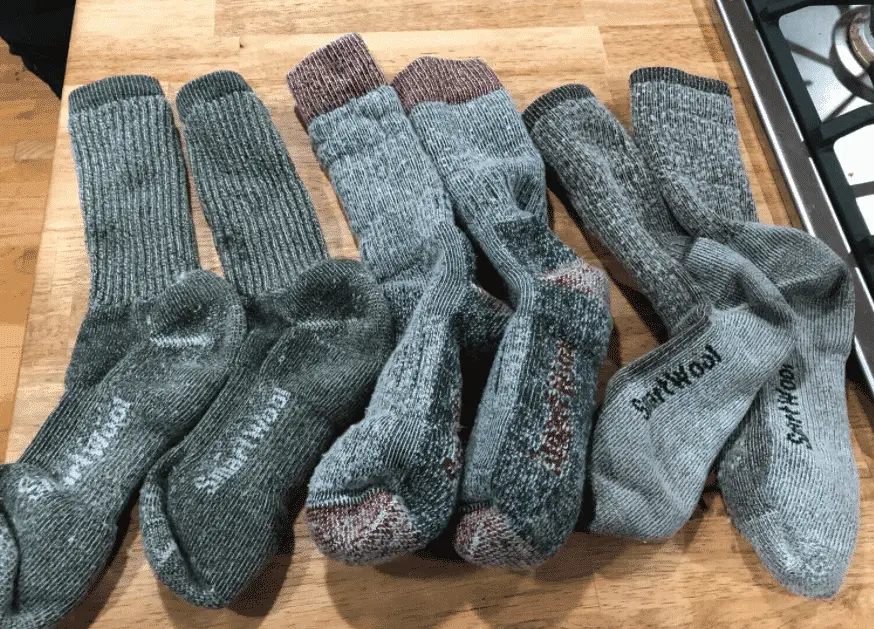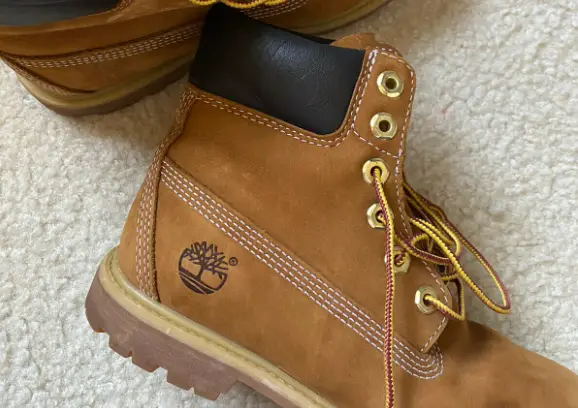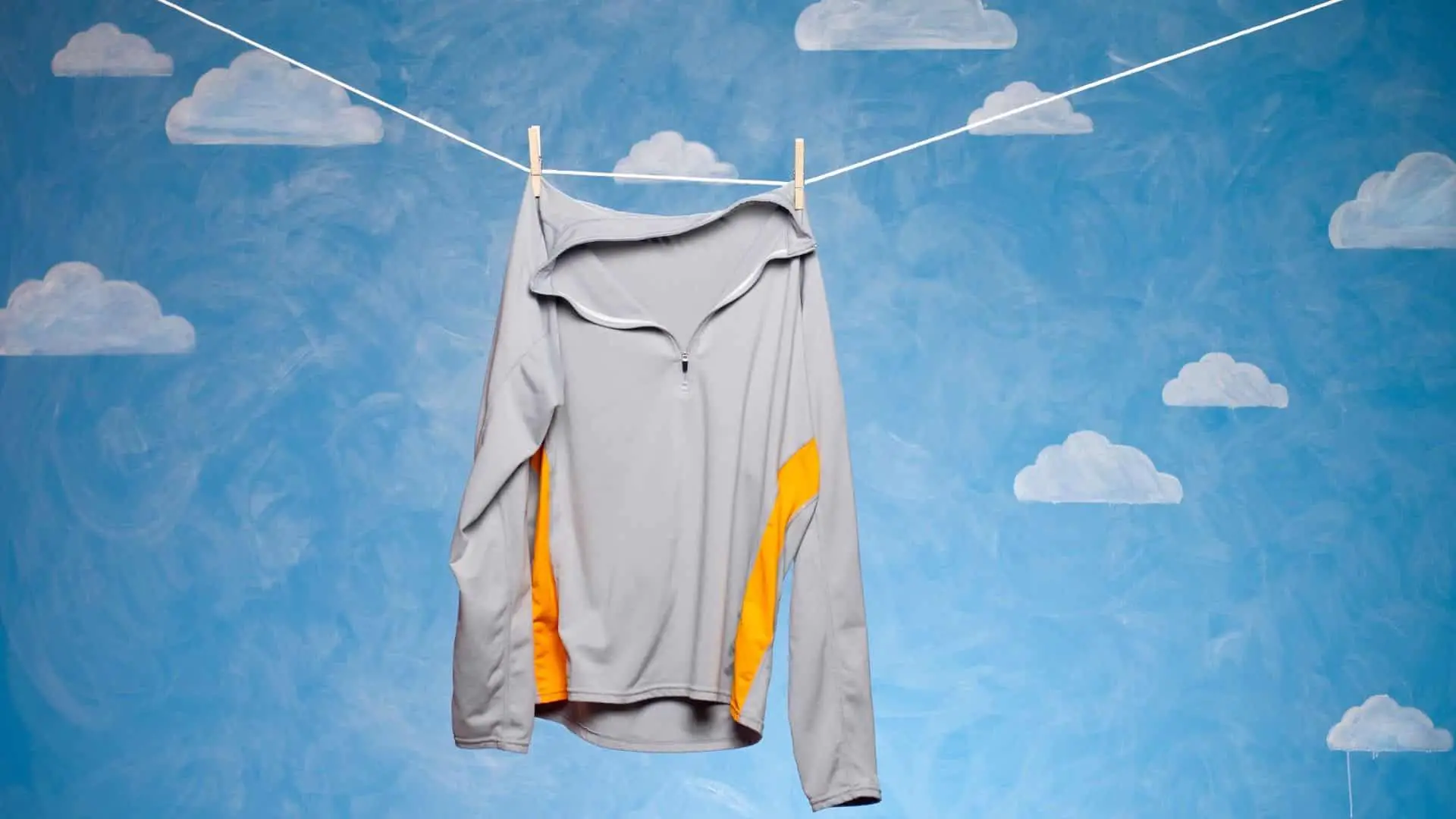Wool and Merino Wool share many of the same qualities, but they’re not the same. So what’s the difference between merino wool and traditional wool?
Merino wool comes from a specific breed of “Merino Sheep”. Merino sheep grow consistently high quality wool with very fine fibers. This makes merino wool lighter and softer than regular wool clothing.
There’s a big difference between cheap wool clothing and expensive wool. Just because something is labeled merino wool doesn’t make it better quality than a similar priced wool item. Lots of other sheep breeds give us soft/warm wool.
In the rest of this article I’ll go over a few of the reasons why you should seriously consider merino wool gear.
Table Of Contents
The Difference Between Merino Wool and Traditional Wool
Did you ever wonder why some wool sweaters are itchy and others aren’t? It all depends on the quality of wool yarn used to make the product. Fine wool fibers result in comfortable itch-free clothing.
It might surprise you that there’s no such thing as “Regular Wool”, “Traditional Wool”, or “Normal Wool”. These terms are widely used to describe the wool from over 1000 different breeds of sheep. Wool can also come from other animals, but the vast majority of wool comes from sheep.
So why isn’t Merino Wool lumped in with everybody else? It’s because of the consistency of the Merino Breed of sheep. Merino sheep consistently produce wool with very fine fibers.
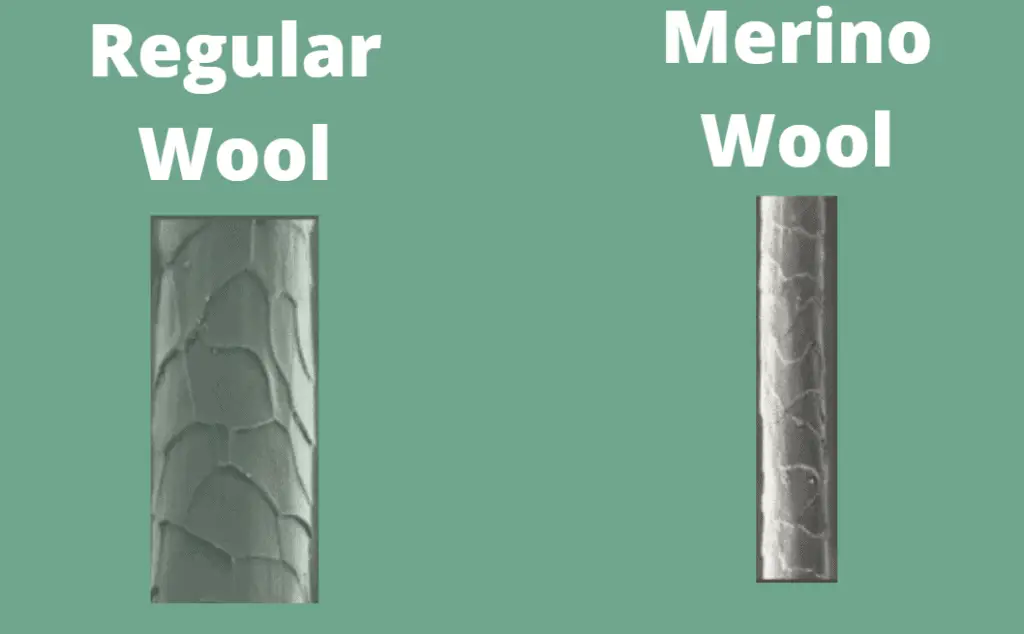
The image above compares a microscopic difference between merino wool and scratchy traditional wool fibers. It’s really easy to see the difference from a microscopic standpoint.
Notice how rough and sharp the fibers look in the regular wool. These rough edges are what make traditional wool itchy. You can reduce the itch with wool conditioners and wash cycles, but those fibers rarely smooth out.
Look how much thinner the merino wool is compared to traditional wool fibers. This thin strand gives the garment a tighter weave. This makes merino gear lighter, better at wicking-moisture, and more breathable.
Merino Wool vs Regular Wool (Cheap Generic Wool)
There’s a big difference between regular wool and merino wool. Please bear in mind that expensive wool clothing can use similar quality yarn. I’m just referring to generic wool gear in a similar price range as merino wool.
You’re really missing out if you haven’t tried merino wool clothing. Give a pair of Merino Wool Socks a try if you don’t believe me. They’re so ridiculously comfortable. I really like the merino wool Smartwool Socks and Darn Tough Hiking Socks.
Benefits of Merino Wool
There’s a reason why wool clothing has been around for centuries. Even today there’s nothing that compares to the warmth and comfort of wool. When you need clothing to protect you in extreme conditions there’s no better choice than wool base layers.
Merino wool provides numerous advantages of traditional wool. It has anti-moisture and moisture regulating properties, provides excellent insulation, it’s lightweight, doesn’t itch, smell or crease.
Regular wool has similar properties, but it’s just a little bit worse at everything. You just can’t beat merino wool base-layers.
1) Extremely Soft- It Doesn’t Itch
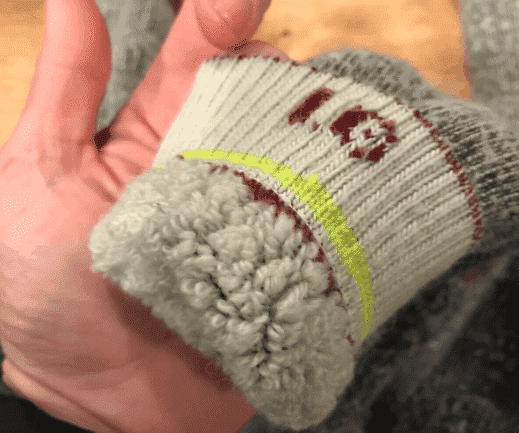
Do you get itchy every time you touch wool fabric? Wool allergies are extremely rare, so you probably don’t have an allergy. Your skin is just reacting to the rough fibers in cheap wool.
Merino wool gear should not cause itchiness! The very fine fibers are so thin that they’re below the human sensitivity threshold. Plus they’re so soft that they bend as they come into contact with your skin.
Unfortunately, some people still have minor reactions to merino wool. This is usually caused by loose threads and it will go away after a few wash cycles(might want to try conditioning). Check out my other post on making merino wool less itchy for more information.
2) Temperature Regulating- The Weather Doesn’t Matter
It doesn’t matter how hot or cold it gets outside you can wear your merino wool gear. Wool keeps you warm in the winter and cool in the summer. It’s the perfect choice for all-season wear.
Wool fibers have 2 main ways to regulate temperature. The rippled structure traps air in the weave providing a natural insulation. It’s kind of like how insulation works in your house walls.
Merino wool also uses evaporative cooling to keep you cool/warm. Wool can absorb up to 35% of its weight in moisture/sweat before it starts to feel wet. As that moisture starts to evaporate the fabric cools as compared to the outside air. This works on the same principle you find in evaporative air conditioning systems.
3) Antimicrobial Properties- Smell Resistance
You don’t want to be the smelly guy on the trail. Thankfully, wool has antimicrobial properties making it difficult for bacteria to attach to the fibers.
Less Bacteria=Less Smell.
This means you can wear the same merino wool garment multiple days in a row. I can hike in my merino wool socks (my favorite) for 3-4 days before they start to smell.
Check out my post “How Often Should You Wash Merino Wool“.
4) Moisture Wicking- No More Sweat

Wool can absorb up to 35% of its own weight in water before it starts to feel wet to the touch. The surface remains dry while the moisture moves into the fiber core.
Wool feels warm, even when it gets wet. That’s what makes wool so versatile. The weather doesn’t matter! You can wear the same wool clothing in rain, snow, and summer heat.
Merino wool is also extremely breathable allowing you to sweat and self regulate body temperature. It keeps you cool in the summer months and comfortably warm in the winter.
Your really missing out if you haven’t tried merino wool underwear. Icebreaker Boxer briefs are expensive, but so worth the price on long camping/backpacking trips (Meriwool is a cheaper option). They reduce sweat and seriously cut down chafing.
5) Easy to Care For- Hand Wash or Washing Machine

Wools odor-neutralizing properties make it very easy to take care of. You still have to occasionally wash wool gear, but it can normally wait a few days without stinking.
Don’t get me wrong. You still have to wash wool clothing! But Don’t Worry, it’s much easier than you think. Learn more about the washing merino wool.
On the trail, all you need is a quick rinse and rub down with biodegradable soap (my favorite). Once you get home just toss your wool gear in the washing machine.
Modern wool garments can usually handle a “Normal Wash Cycle” with warm water and regular detergent. I usually hang dry wool to prevent damage, but it can go in the dryer if it’s pre-shrunk.
6) Environmentally Friendly- Shearing Causes No Pain
Wool is environmentally friendly unlike other yarn. All you need is a big open field and a bunch of Merino Sheep. The sheep are shorn twice per year (causes no pain) and they automatically grow a new coat.
Wool is also extremely durable so you will have less waste. If a wool sweater can withstand the abuse on a fishing boat it can handle anything. With less wash cycles, and extremely durable fibers merino wool will usually last a decade or more.
I’ve been wearing the same Smartwool Socks for years and they still look like new. The socks pictured below have been worn a few days per week for the past 5-10 years.
